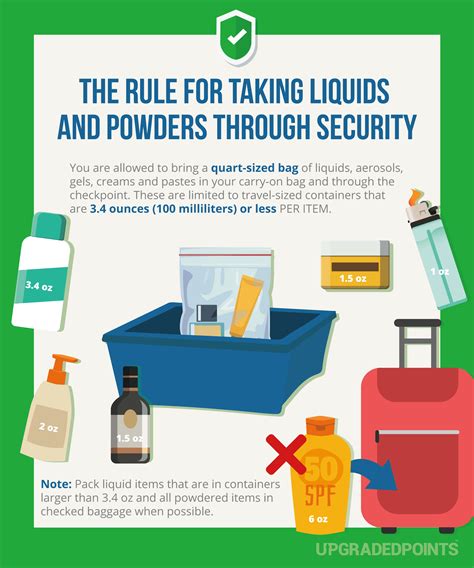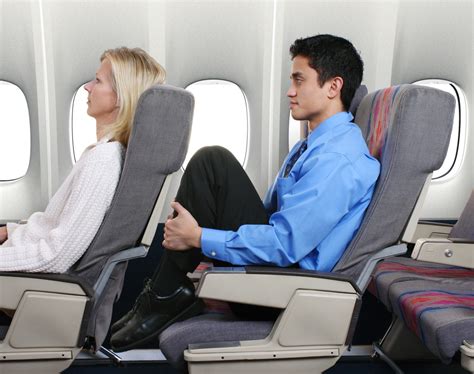
Travelers must now unpack electronic devices larger than a cell phone from their carry-on bags during security screenings, according to new Transportation Security Administration (TSA) guidelines aimed at improving threat detection. The revised policy, effective immediately at airports nationwide, mandates that items like laptops, tablets, e-readers, and, notably, travel chargers must be placed in separate bins for X-ray screening, ending the practice of concealing them within packed bags. This change seeks to provide TSA officers with clearer images of bag contents, potentially speeding up the screening process and enhancing security.
The updated procedure, confirmed by the TSA, reflects ongoing efforts to refine security protocols and address evolving threats. By requiring the removal of electronics and chargers, TSA aims to mitigate the risk of concealed explosives or other prohibited items that might be obscured by densely packed electronics. “The clearer the images that TSA officers see, the faster and more effectively they can analyze the contents of carry-on bags,” stated a TSA spokesperson. The agency believes this measure will reduce the frequency of bag rescreens, ultimately improving the passenger experience while maintaining a high level of security.
This adjustment builds upon existing rules that already require passengers to remove laptops from their bags for separate screening. The expansion to include travel chargers and other similar-sized electronics is a direct response to security assessments and technological advancements in detection capabilities. The TSA has been gradually implementing enhanced screening procedures over the past several years, focusing on improving the clarity and accuracy of X-ray images.
Industry experts suggest that this change is not entirely unexpected, given the TSA’s continuous evaluation of security protocols and the increasing sophistication of concealment methods. “The TSA is always looking for ways to stay ahead of potential threats,” explained a security analyst. “Requiring electronics and chargers to be separated makes sense from a security perspective, as it eliminates potential hiding places and allows for a more thorough examination of bag contents.”
Passengers are advised to familiarize themselves with the new guidelines before heading to the airport to avoid delays and ensure a smoother security experience. The TSA recommends packing electronics and chargers in easily accessible locations within carry-on bags to facilitate their removal during screening. Furthermore, enrolling in TSA PreCheck can expedite the screening process, as participants are often exempt from having to remove electronics and other items from their bags.
The TSA’s ongoing efforts to enhance security protocols reflect a commitment to adapting to evolving threats and improving the overall passenger experience. While the new guidelines may require some adjustment on the part of travelers, the agency emphasizes that these measures are essential for maintaining a safe and secure transportation system.
The implementation of this new rule follows a series of pilot programs and assessments conducted at various airports across the country. The TSA gathered data on the effectiveness of separating electronics and chargers in improving threat detection and reducing the need for secondary screenings. The results of these evaluations indicated that the measure significantly enhanced security without causing undue delays for passengers.
Moreover, the TSA has invested in advanced imaging technology that provides more detailed and accurate X-ray images of carry-on bags. These advanced systems, coupled with the revised screening procedures, enable TSA officers to identify potential threats more efficiently. The agency is also working to educate passengers about the new guidelines through various channels, including social media, airport signage, and public service announcements.
The TSA recognizes that the new rule may require some adjustment on the part of travelers, and the agency is committed to providing clear and consistent information to ensure a smooth transition. Passengers are encouraged to visit the TSA website or contact the TSA Contact Center for any questions or concerns regarding the new screening procedures.
The impact of this change is expected to be significant, affecting millions of travelers who pass through U.S. airports each day. While some passengers may find the new rule inconvenient, the TSA emphasizes that these measures are necessary to protect the traveling public. The agency is confident that the revised screening procedures will enhance security while minimizing disruption to the passenger experience.
The TSA’s decision to implement this new rule is also influenced by international security standards and best practices. Many other countries have already adopted similar screening procedures, requiring passengers to remove electronics from their bags for separate inspection. By aligning its security protocols with international standards, the TSA aims to enhance the overall security of the global aviation system.
This latest update is part of a broader effort by the TSA to modernize its security procedures and leverage technology to improve threat detection. The agency is continuously evaluating new technologies and strategies to stay ahead of potential threats and ensure the safety and security of the nation’s transportation system.
The TSA has also been working closely with airlines and airport operators to ensure that the new screening procedures are implemented effectively and efficiently. Airlines are providing passengers with information about the new guidelines through their websites and mobile apps, while airport operators are adjusting their security checkpoints to accommodate the additional screening requirements.
The long-term goal of the TSA is to create a more seamless and efficient security process that minimizes disruption to passengers while maintaining a high level of security. The agency is committed to working with all stakeholders to achieve this goal and ensure that the nation’s transportation system remains safe and secure.
The TSA’s commitment to continuous improvement and innovation is essential for addressing the evolving threats to aviation security. By investing in new technologies, refining its screening procedures, and collaborating with industry partners, the agency is working to create a more resilient and secure transportation system for the future.
The agency’s focus remains on providing a safe and secure travel experience for all passengers. The TSA acknowledges that security procedures may sometimes be inconvenient, but they are necessary to protect the traveling public from potential threats. The agency is committed to minimizing disruption and ensuring that passengers can travel safely and efficiently.
This new measure is also projected to influence the design and manufacturing of travel bags. Luggage companies may start to incorporate designated compartments for easy removal of electronics and chargers, making it simpler for travelers to comply with TSA guidelines. This adaptation could lead to more user-friendly and efficient travel accessories in the future.
Furthermore, the increased visibility of electronics during screening might deter theft. When items are clearly displayed, potential thieves are less likely to target them, as it increases the risk of being caught. This could inadvertently lead to a decrease in electronics theft at airports.
The TSA’s initiative also prompts a broader conversation about the balance between security measures and passenger convenience. While the agency’s primary focus is on safety, there’s an ongoing effort to streamline processes and reduce friction for travelers. This new rule underscores the challenges of finding that balance, and the importance of continuous assessment and adjustment of security protocols.
In response to this new mandate, several travel and consumer advocacy groups have issued recommendations to travelers. These include arriving at the airport earlier than usual to accommodate potential delays, organizing carry-on bags for easy access to electronics and chargers, and considering enrolling in TSA PreCheck or Global Entry to expedite the screening process.
The TSA’s decision also aligns with broader efforts to enhance cybersecurity. By requiring electronics to be removed from bags, TSA officers have an opportunity to visually inspect devices for any signs of tampering or unauthorized modifications. This added layer of security can help to prevent cyber threats from entering the aviation system.
The introduction of this new rule is a dynamic process, and the TSA is prepared to make adjustments as needed based on feedback from passengers, airport operators, and other stakeholders. The agency is committed to ensuring that the screening process is as efficient and effective as possible, while maintaining the highest levels of security.
The TSA’s efforts to enhance security are not limited to airports. The agency also works closely with other transportation security agencies to protect other modes of transportation, including railways, buses, and maritime vessels. This comprehensive approach to security is essential for safeguarding the nation’s entire transportation system.
The implementation of this new rule is a testament to the TSA’s commitment to continuous improvement and its dedication to protecting the traveling public. The agency recognizes that security is an evolving challenge, and it is committed to adapting its procedures and technologies to stay ahead of potential threats.
The decision to require the removal of travel chargers and other electronics from carry-on bags is a proactive step that will enhance security and improve the overall passenger experience. The TSA is confident that this new rule will help to create a safer and more secure transportation system for everyone.
The TSA’s strategic communication plan involves disseminating information through multiple channels, including social media platforms like Twitter and Facebook, press releases, and partnerships with travel influencers. This comprehensive approach aims to reach a broad audience and ensure that travelers are well-informed about the new regulations. The use of visual aids, such as infographics and videos, further simplifies the communication process, making it easier for passengers to understand and comply with the new requirements.
Furthermore, the TSA is actively soliciting feedback from travelers through surveys and online forums to assess the impact of the new rule and identify areas for improvement. This iterative approach allows the agency to fine-tune its procedures and address any concerns raised by the public. The TSA is also collaborating with disability advocacy groups to ensure that the new screening process is accessible to all passengers, regardless of their physical or cognitive abilities.
The TSA’s commitment to transparency and accountability is evident in its willingness to engage with the public and respond to their concerns. The agency recognizes that building trust with the traveling public is essential for the success of its security mission. By actively communicating its policies and procedures and soliciting feedback from travelers, the TSA is working to create a more collaborative and transparent security environment.
The new rule also has implications for the environment. By encouraging travelers to pack their electronics and chargers in a more organized manner, the TSA may indirectly contribute to reducing waste. When items are easily accessible, travelers are less likely to discard them accidentally or misplace them during the screening process. This could lead to a decrease in the amount of electronic waste generated at airports.
Moreover, the TSA is exploring the use of sustainable materials and practices in its security operations. The agency is working to reduce its carbon footprint and minimize its environmental impact. This commitment to sustainability is part of a broader effort to create a more responsible and environmentally friendly transportation system.
The TSA’s holistic approach to security encompasses not only physical security but also environmental sustainability and social responsibility. By addressing these interconnected issues, the agency is working to create a more resilient and sustainable transportation system for the future.
The enhanced security measures are also expected to have a positive impact on the morale of TSA officers. By providing them with clearer images and more efficient screening procedures, the agency is empowering them to do their jobs more effectively. This can lead to increased job satisfaction and a greater sense of purpose.
Furthermore, the TSA is investing in training and development programs to ensure that its officers are equipped with the skills and knowledge they need to meet the evolving challenges of aviation security. These programs cover a wide range of topics, including threat detection, risk assessment, and customer service.
The TSA’s commitment to its workforce is a key factor in its success. By investing in its officers and providing them with the resources they need, the agency is creating a more motivated and effective security force.
The TSA’s ongoing efforts to enhance security are essential for protecting the nation’s transportation system and ensuring the safety of the traveling public. The agency’s commitment to continuous improvement, innovation, and collaboration is a testament to its dedication to its mission.
The new rule requiring the removal of travel chargers and other electronics from carry-on bags is a significant step forward in the TSA’s efforts to enhance security and improve the overall passenger experience. While the change may require some adjustment on the part of travelers, the agency is confident that the benefits of the new rule will outweigh any inconvenience. The TSA remains committed to working with all stakeholders to ensure that the nation’s transportation system remains safe and secure.
The ripple effect of this policy extends beyond the immediate airport security experience. Educational institutions and corporate travel departments may need to update their travel guidelines and training materials to reflect the new TSA requirements. This widespread adaptation highlights the significant impact of the TSA’s policies on various sectors of society.
Moreover, the new rule could spur innovation in the electronics industry. Manufacturers might develop travel chargers with transparent casings or built-in security features that facilitate screening. Such innovations could enhance security while minimizing inconvenience for travelers.
The TSA’s proactive approach to security also serves as a deterrent to potential terrorists and criminals. By continuously adapting its procedures and technologies, the agency sends a message that it is vigilant and prepared to counter any threats. This deterrence effect is a crucial component of the TSA’s overall security strategy.
The agency’s commitment to collaboration extends beyond domestic partners to include international security organizations. The TSA works closely with these organizations to share best practices and coordinate security efforts. This global collaboration is essential for addressing the transnational threats to aviation security.
The TSA’s multifaceted approach to security reflects its understanding that there is no single solution to the challenges of terrorism and crime. The agency’s strategy involves a combination of technology, procedures, and partnerships, all working together to create a more resilient and secure transportation system.
The new rule requiring the removal of travel chargers and other electronics from carry-on bags is a significant part of this comprehensive strategy. While the change may seem like a small adjustment, it is a vital component of the TSA’s efforts to protect the traveling public.
The TSA’s unwavering commitment to security is a source of reassurance for travelers and a testament to the agency’s dedication to its mission. The agency’s continuous efforts to improve its procedures and technologies are essential for maintaining a safe and secure transportation system for everyone.
FAQ Section:
Frequently Asked Questions (FAQ) Regarding the New TSA Rule on Travel Chargers and Electronics
Q1: What exactly does the new TSA rule entail?
A: The new TSA rule mandates that all electronic devices larger than a cell phone, including laptops, tablets, e-readers, and travel chargers, must be removed from carry-on bags and placed in separate bins for X-ray screening. This applies to all standard TSA screening lanes at airports nationwide. The aim is to provide TSA officers with clearer images of bag contents to enhance threat detection. As stated by a TSA spokesperson, “The clearer the images that TSA officers see, the faster and more effectively they can analyze the contents of carry-on bags.”
Q2: Why is the TSA implementing this new rule?
A: The TSA is implementing this rule to improve the effectiveness of security screenings. Concealing electronics and chargers within packed bags can obscure potential threats and lead to more frequent bag rescreens. By requiring these items to be placed in separate bins, TSA officers can obtain clearer X-ray images and identify potential risks more efficiently. The TSA continuously evaluates security protocols and adapts them to address evolving threats and technological advancements in detection capabilities.
Q3: Does this rule apply to TSA PreCheck members?
A: While TSA PreCheck members generally experience expedited screening, the extent to which this new rule applies can vary. Often, TSA PreCheck passengers are not required to remove electronics from their bags. However, TSA officers retain the discretion to request the removal of any item if they deem it necessary for security purposes. It’s always recommended to be prepared to remove electronics, even with TSA PreCheck.
Q4: How should I pack my carry-on bag to comply with the new rule and avoid delays?
A: To comply with the new rule and minimize delays, pack your electronics and travel chargers in easily accessible locations within your carry-on bag. Consider using a dedicated compartment or packing cube for these items. This will allow you to quickly remove them and place them in separate bins during screening. The TSA recommends being organized and prepared to streamline the screening process.
Q5: What happens if I forget to remove my electronics or chargers from my bag?
A: If you forget to remove your electronics or chargers from your bag, your bag will likely be flagged for additional screening. A TSA officer will need to manually inspect your bag, which can cause delays for you and other passengers. To avoid this, take a moment to double-check your bag before placing it on the conveyor belt. It’s better to be proactive and ensure compliance with the new rule.
Additional Information and Context
The TSA’s decision to expand the electronics removal policy stems from a multi-layered approach to security that incorporates intelligence gathering, risk assessment, and technological innovation. The agency constantly analyzes threat patterns and vulnerabilities to identify areas where security protocols can be strengthened. The increasing sophistication of concealment methods, coupled with advancements in X-ray technology, prompted the TSA to revisit its screening procedures for electronics.
The implementation of this new rule is also influenced by international security standards and best practices. Many other countries have already adopted similar screening procedures, requiring passengers to remove electronics from their bags for separate inspection. By aligning its security protocols with international standards, the TSA aims to enhance the overall security of the global aviation system.
Furthermore, the TSA has invested in advanced imaging technology that provides more detailed and accurate X-ray images of carry-on bags. These advanced systems, coupled with the revised screening procedures, enable TSA officers to identify potential threats more efficiently. The agency is also working to educate passengers about the new guidelines through various channels, including social media, airport signage, and public service announcements.
The TSA recognizes that the new rule may require some adjustment on the part of travelers, and the agency is committed to providing clear and consistent information to ensure a smooth transition. Passengers are encouraged to visit the TSA website or contact the TSA Contact Center for any questions or concerns regarding the new screening procedures.
The impact of this change is expected to be significant, affecting millions of travelers who pass through U.S. airports each day. While some passengers may find the new rule inconvenient, the TSA emphasizes that these measures are necessary to protect the traveling public. The agency is confident that the revised screening procedures will enhance security while minimizing disruption to the passenger experience.
The TSA’s ongoing efforts to enhance security protocols reflect a commitment to adapting to evolving threats and improving the overall passenger experience. While the new guidelines may require some adjustment on the part of travelers, the agency emphasizes that these measures are essential for maintaining a safe and secure transportation system.
The TSA has also been working closely with airlines and airport operators to ensure that the new screening procedures are implemented effectively and efficiently. Airlines are providing passengers with information about the new guidelines through their websites and mobile apps, while airport operators are adjusting their security checkpoints to accommodate the additional screening requirements.
The long-term goal of the TSA is to create a more seamless and efficient security process that minimizes disruption to passengers while maintaining a high level of security. The agency is committed to working with all stakeholders to achieve this goal and ensure that the nation’s transportation system remains safe and secure.
The TSA’s commitment to continuous improvement and innovation is essential for addressing the evolving threats to aviation security. By investing in new technologies, refining its screening procedures, and collaborating with industry partners, the agency is working to create a more resilient and secure transportation system for the future.
The agency’s focus remains on providing a safe and secure travel experience for all passengers. The TSA acknowledges that security procedures may sometimes be inconvenient, but they are necessary to protect the traveling public from potential threats. The agency is committed to minimizing disruption and ensuring that passengers can travel safely and efficiently.
This new measure is also projected to influence the design and manufacturing of travel bags. Luggage companies may start to incorporate designated compartments for easy removal of electronics and chargers, making it simpler for travelers to comply with TSA guidelines. This adaptation could lead to more user-friendly and efficient travel accessories in the future.
Furthermore, the increased visibility of electronics during screening might deter theft. When items are clearly displayed, potential thieves are less likely to target them, as it increases the risk of being caught. This could inadvertently lead to a decrease in electronics theft at airports.
The TSA’s initiative also prompts a broader conversation about the balance between security measures and passenger convenience. While the agency’s primary focus is on safety, there’s an ongoing effort to streamline processes and reduce friction for travelers. This new rule underscores the challenges of finding that balance, and the importance of continuous assessment and adjustment of security protocols.
In response to this new mandate, several travel and consumer advocacy groups have issued recommendations to travelers. These include arriving at the airport earlier than usual to accommodate potential delays, organizing carry-on bags for easy access to electronics and chargers, and considering enrolling in TSA PreCheck or Global Entry to expedite the screening process.
The TSA’s decision also aligns with broader efforts to enhance cybersecurity. By requiring electronics to be removed from bags, TSA officers have an opportunity to visually inspect devices for any signs of tampering or unauthorized modifications. This added layer of security can help to prevent cyber threats from entering the aviation system.
The introduction of this new rule is a dynamic process, and the TSA is prepared to make adjustments as needed based on feedback from passengers, airport operators, and other stakeholders. The agency is committed to ensuring that the screening process is as efficient and effective as possible, while maintaining the highest levels of security.









